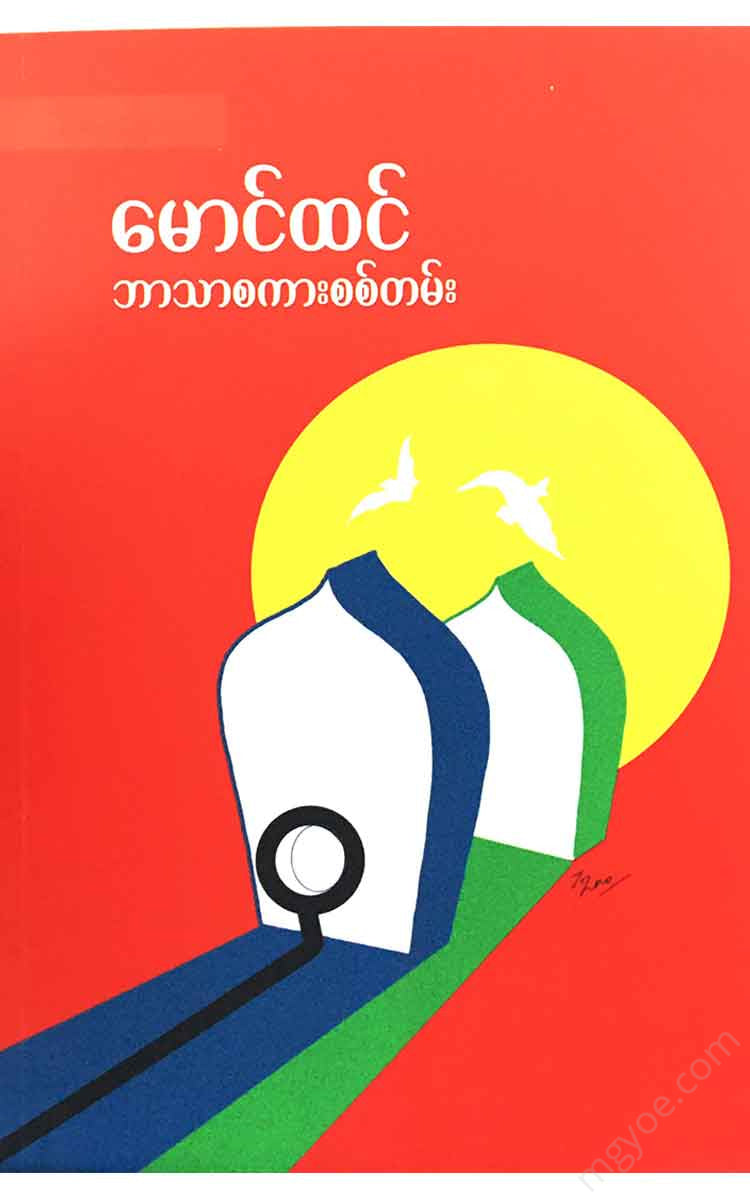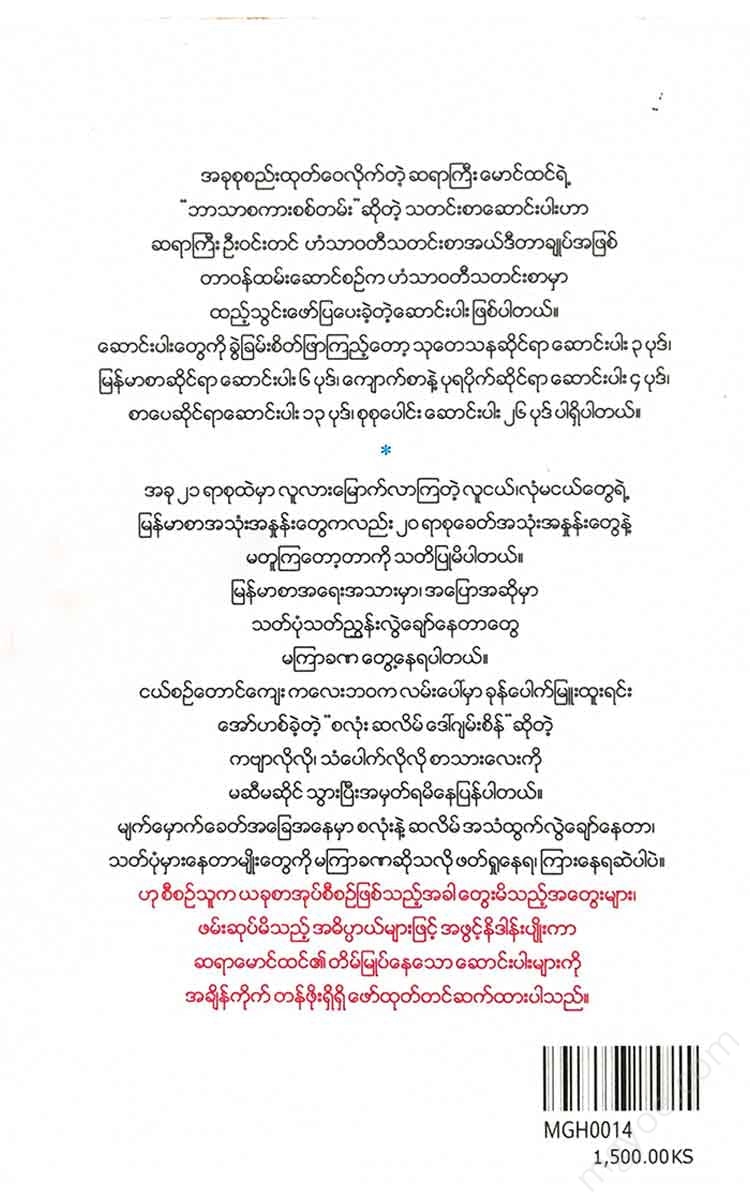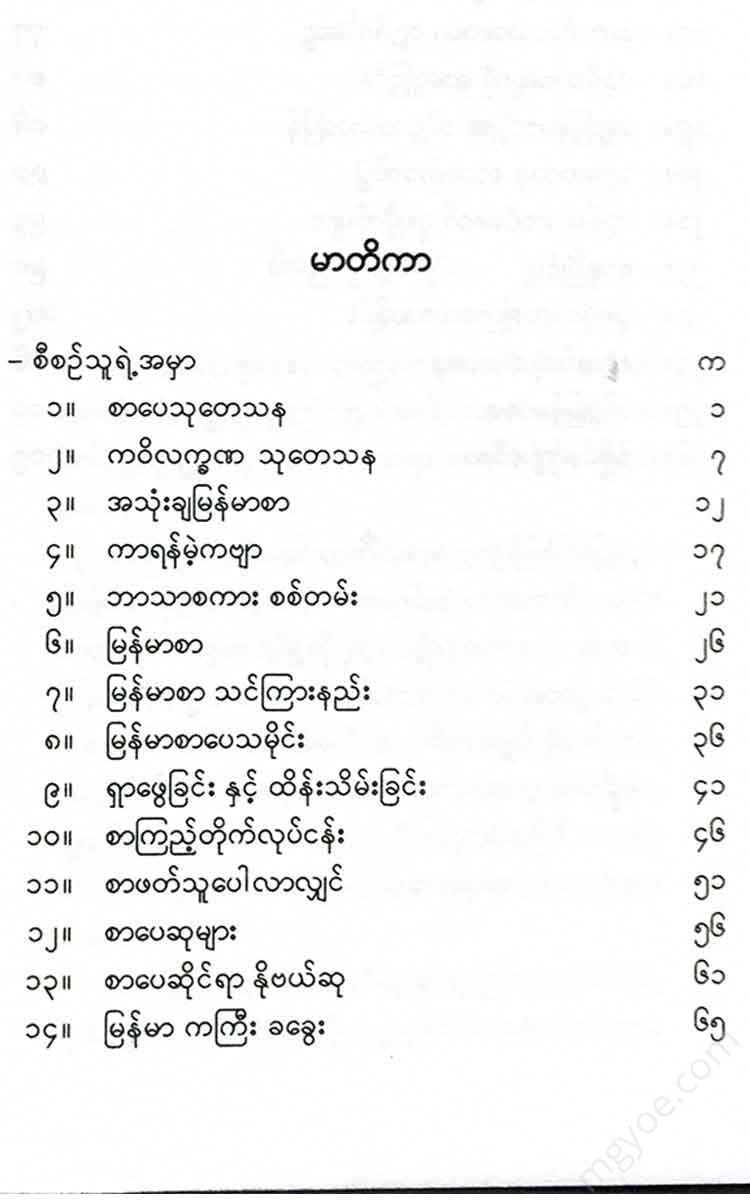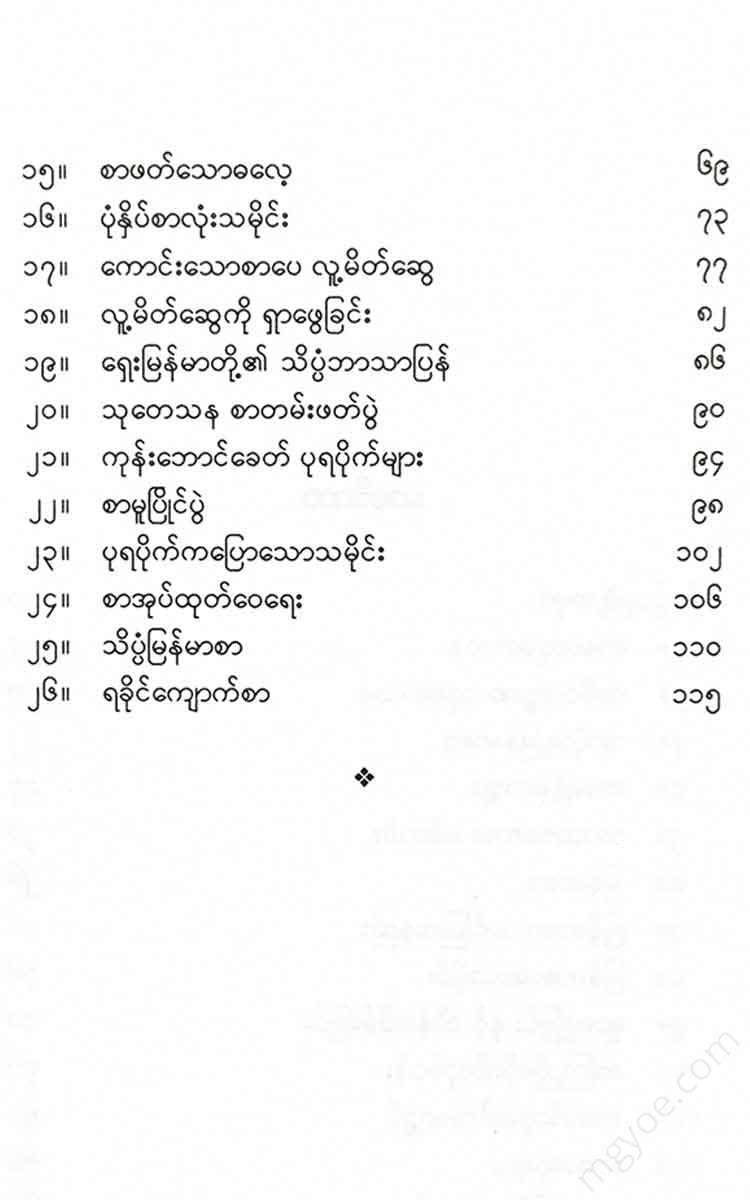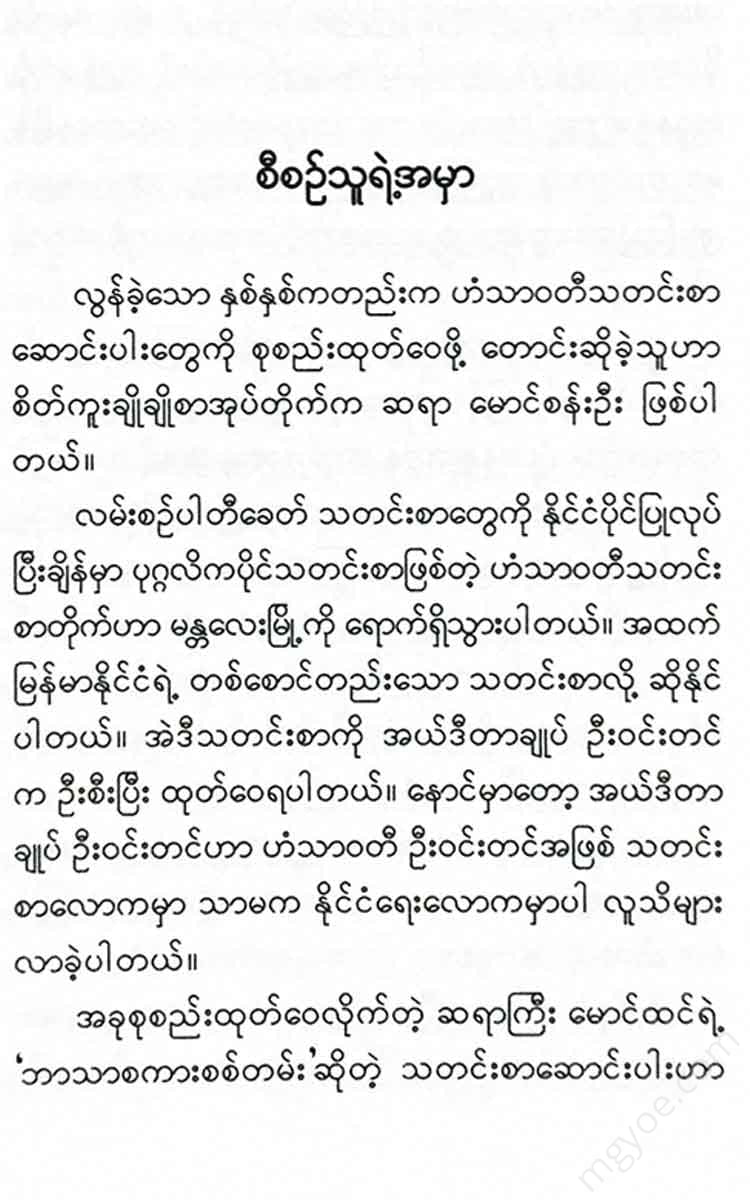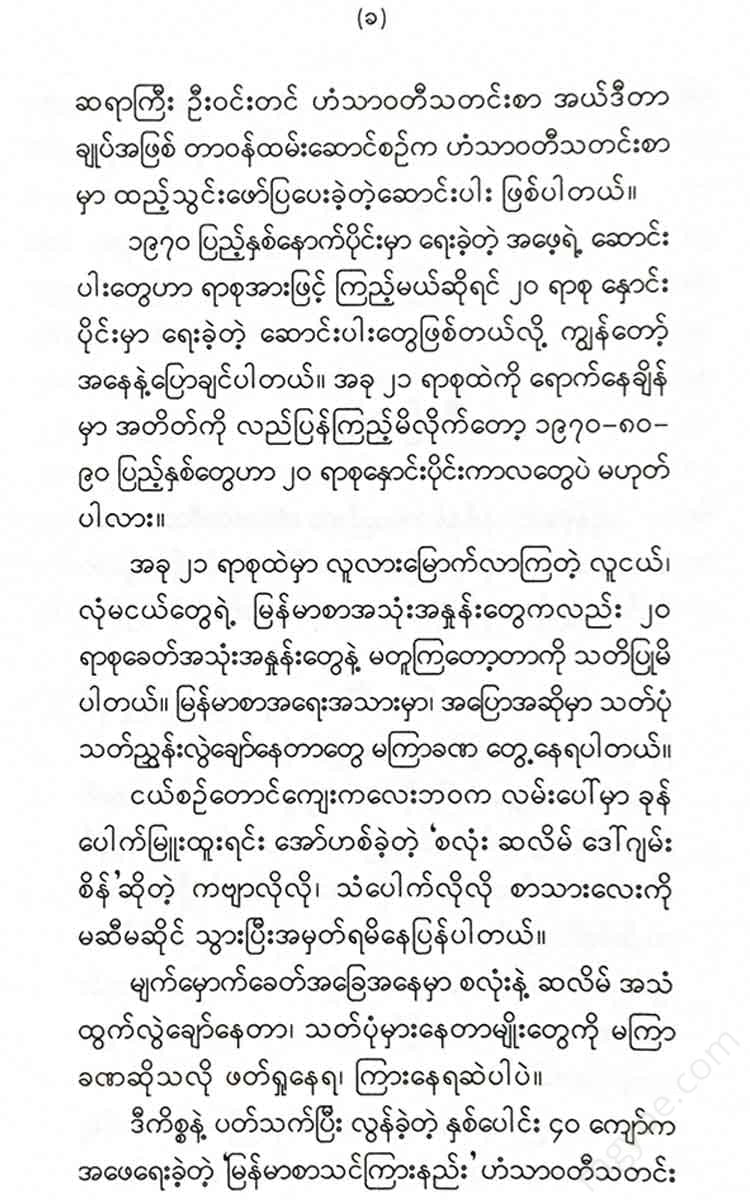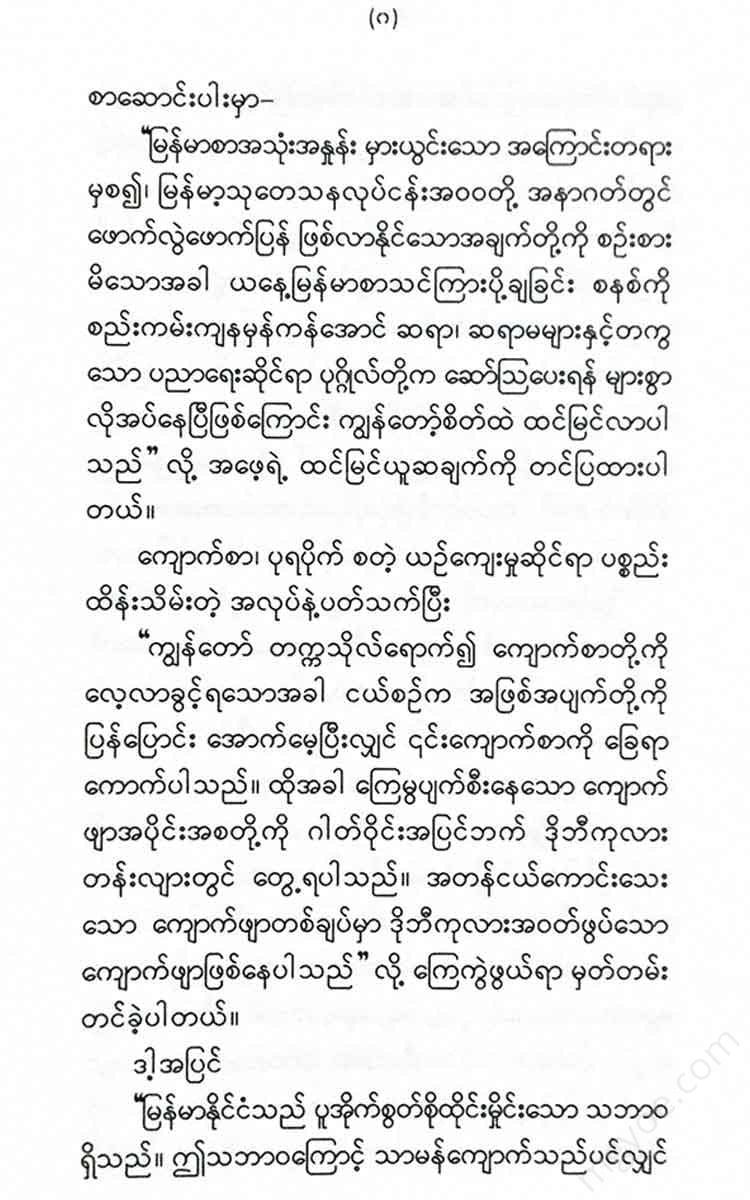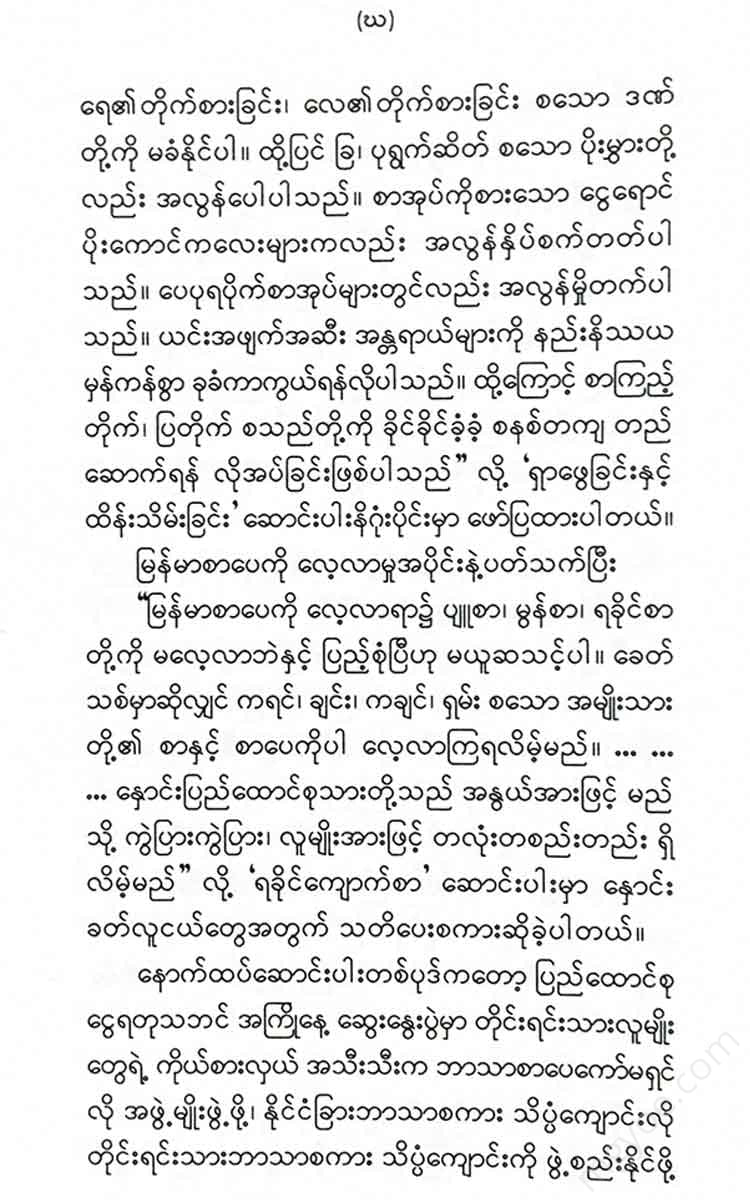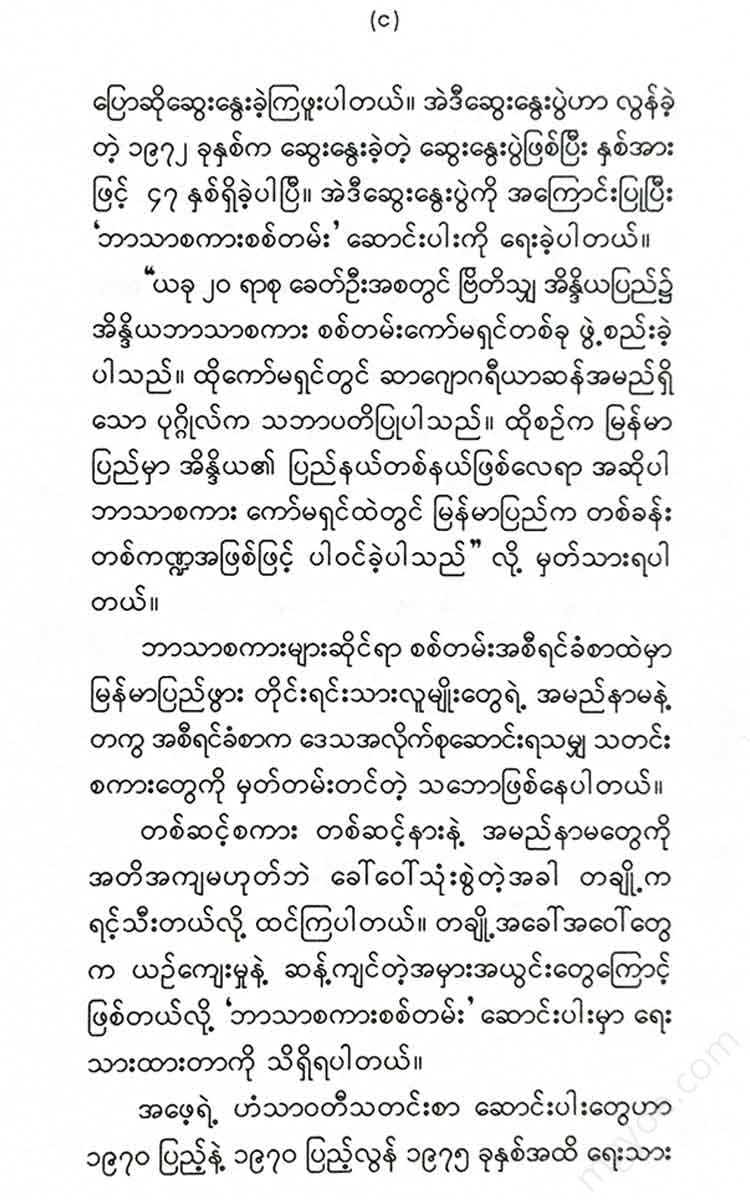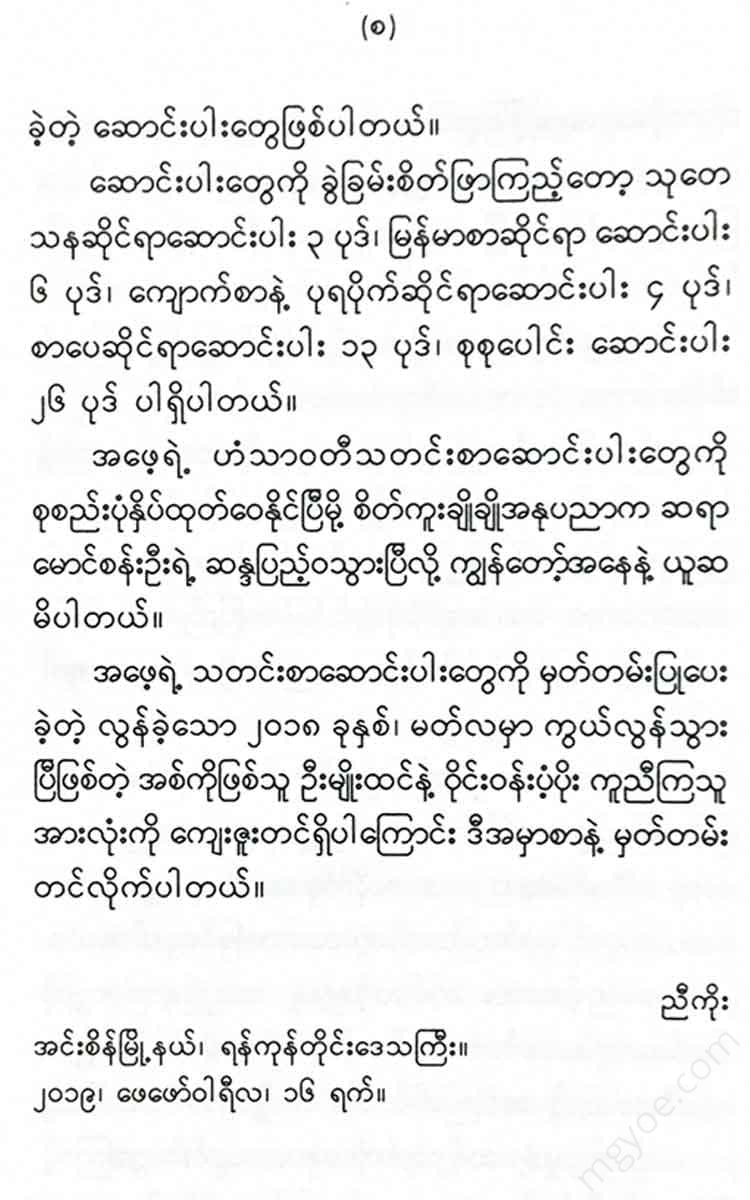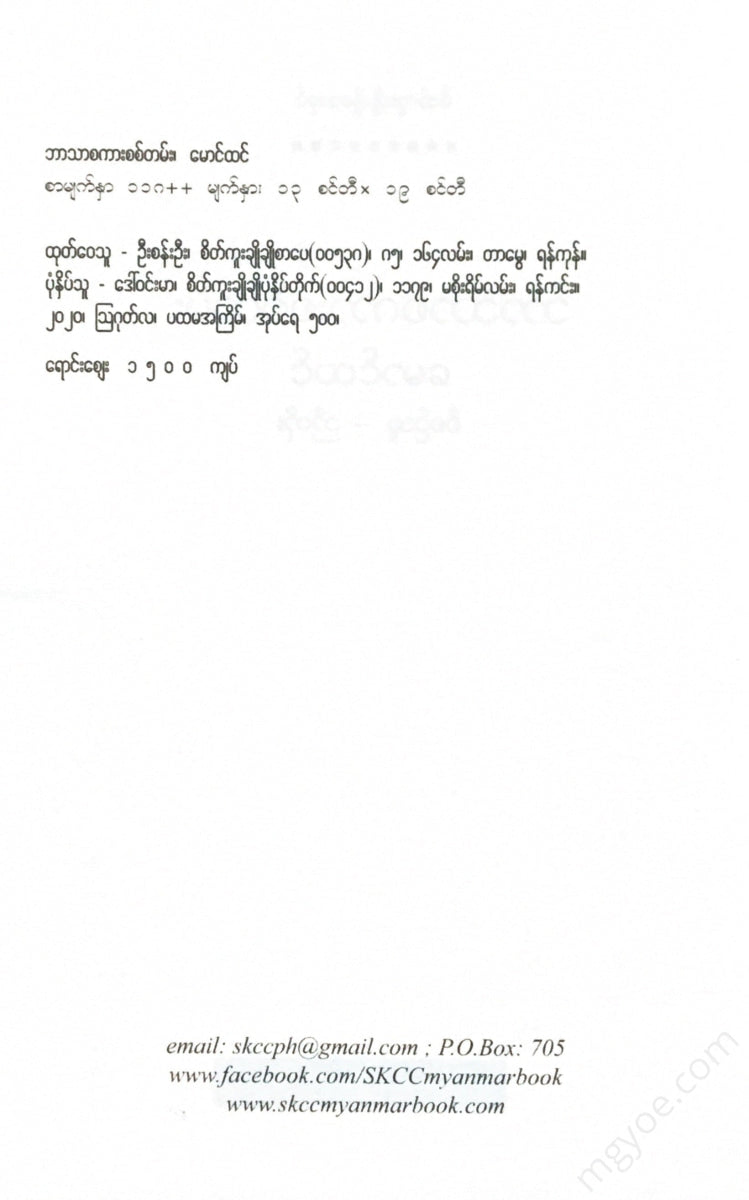စိတ်ကူးချိုချိုစာပေ
Maung Htin - Language Survey
Maung Htin - Language Survey
Couldn't load pickup availability
Literary research
In 1920, the University of Yangon, which was then called Yangon University, was established. However, the newly established university was boycotted by university students. Here, the National College was established in Bahan.
The National College has been instrumental in the development of the Myanmar education system in general. It has also been instrumental in providing Burmese language education for subjects such as history, geography, and civics. The aim is that one day, apart from foreign languages, all other subjects will be taught in Burmese.
This is general. When the National College was established, Burmese language and literature, history, etc. were studied systematically and expanded more than before. Previously, teaching Burmese language at universities was limited to teaching one of the ten major dramas, or an obscure poem, poem, or poem. When it came to teaching history, it was limited to teaching Greek history, Roman history, European history, and English history. There was no systematic research into Burmese history. In view of this, the tradition of teaching Burmese language, literature, and history in a comprehensive and comprehensive manner due to the National College is a characteristic.
However, the National College did not last long. After the National College was abolished, the students of that college continued their studies at the University of Yangon. At that time, the demands of the university strike were partially met due to the reformist ideology. When the people of the National College tradition entered the University of Yangon, the legal efforts to develop the Yangon University Act based on the demands of the university strike were gradually made.
If we look back at the state of university education around 1925, we will see this nature. Because of this nature, the teaching of Burmese language, literature, and history at universities has improved and changed.
However, in this development and transformation, success will not be possible without the support of Burmese literature and its founders. However, there is a professor at Yangon University, U Pe Maung Tin. He consulted with Saya Lin, Saya, Bagan Minister Min U Tin, Wazir Buddhi U Pho Sein, and Saya Lun, also known as Mr. Maung Mhai, and took advice and suggestions to improve the teaching of Burmese language, literature, and history.
Here, the stone inscriptions of the Bagan period shine brightly in the history of Burmese literature. The people have the opportunity to know the inscriptions, literature, history, architecture, art, ancient artifacts, etc. of the Bagan period. The University of Yangon has researched and presented the essence of the Bagan period to the people.
As a result of these developments, the literary issues of the Bagan period became more relevant to the young generation. As a result, Burmese literature began to revive around the 1930s.
Burmese literature has developed due to its experience in Pali and Sanskrit, as well as its experience in English and European literature, and has gradually developed over the past thirty to forty years. Especially in the present era, under the auspices of the Yangon University of Arts and Sciences and the Mandalay University of Arts and Sciences, the Burmese language and literature have become very rich due to the tireless efforts made not only in various Burmese studies but also in the arts, sciences, and technology. In the arts, politics, social sciences, and philosophy have developed rapidly, and as ideas have developed, the Burmese language and literature have developed at the same pace as the advancement of everyday science.
It goes without saying that literature has progressed because of this development of writing and speech. Although it must be admitted that undesirable problems still remain in today's literature, we should not underestimate the fact that there are progressive elements, that they are developing, that they are advancing.
Research is gaining momentum in Burmese literature. This is a good sign.
The field of literary research needs to be further expanded and developed. I think that literary artists in both Yangon and Mandalay are making efforts in this regard. Therefore, when talking about Yangon, Mandalay cannot be ignored. Similarly, when talking about Mandalay, Yangon cannot be ignored.
However, we should especially consider that Mandalay is like a bank of Burmese culture. Mandalay is directly related to Bagan culture. Similarly, the cultures of Pinya, Sagaing, Innwa, and Konbaung periods are intertwined with Mandalay.
Therefore, it is worth noting that all the arts related to literature, architecture, music, painting, dance, singing, etc., are still alive and well in Mandalay today.
I can't say whether it is because of this nature, but now, every year, on this day, researchers in Mandalay present and discuss research papers, research papers, criticism papers, etc. related to literature and all kinds of arts.
When we read the writings of Mandalay scholars, we see some things that reflect the Inwa period. If the Bagan period was a period of construction, I think scholars would accept it. I would say that the Inwa period was a period of construction and development. Burmese literary historians are well aware of how much the Po Kavya, Lanka Maw Kun, Yatu, Than Ping, Luta, Echin, etc. flourished during the Inwa period. Just as they have researched the Bagan period, the Inwa period also needs to be researched in detail.
In the Bagan period, the prose writing, “He took a high enough mountain and made a statue of the Lord,” progressed to the writing of poetry, “The wind blows, the mountain of the gods, the high peak, the forest is full of flowers, the fragrant flowers bloom, the words of the flowers are gold and false.” In the Inva period, even the stone inscriptions found a poem, “The three-dimensional, the half-faced, the dark-skinned, the beloved couple, the lasting beauty, the beautiful
I have read that foreigners who have read about the Inwa period have written about the city of Inwa as if a mountain of gold had grown there. During the prosperity of the Inwa period, Myanmar was indeed a land of gold. As Inwa prospered, Inwa culture also reached its peak. The groups of people such as Mahasila Wansa, Maharatthasa, and Ottama Kyaw and the essence contained in those groups show how the culture of the Inwa period reached its peak. Other poems and prose writings also show the high level of social and political thought of the Inwa period.
If we study the Inwa period, we will be able to understand the nature of the Middle Ages and the Renaissance of Burma logically.
Therefore, I wish all the scholars who are striving today that their efforts will continue to grow and develop day by day.
Hanthawaddy Newspaper, November, 1970
